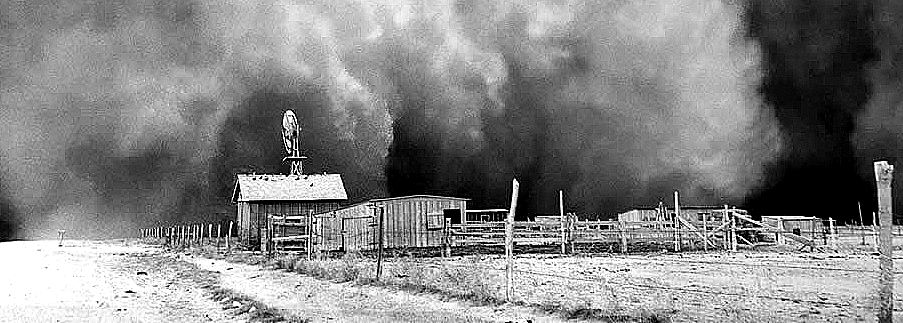Conserving, The Motherlode
Mining the Mother Load by Andy Wilkinson (credit: Western Folklife Center)
The Ogalalla aquifer has been called the 'motherlode' of Great Plains water supplies. This groundwater aquifer represents a reservoir of freshwater stretching northwards in underground sands and gravels from the prairies of West Texas and Oklahoma to South Dakota. The Ogallala is one of the largest aquifers in the world covering an estimated area of ~175,000 square miles including portions of eight US states. Like water everywhere west of the 100th Meridian, the aquifer is being overdrawn. Similar to another human-caused disaster on the arid western plains in the 1930's, eloquently portrayed in the PBS documentary The Dust Bowl, the Ogalalla 'water tank' is being rapidly depleting.
The water is a hydrologic artifact from the Pleistocene Ice Ages and depleted underground layers could take more than 6000 years to naturally recharge. Geologic and environmental studies have shown that:
"Since 1950, agricultural irrigation reduced the aquifer by ~10% alone while between 2001-2008, the depletion of the aquifer was ~32% of the cumulative total during the entire 20th century."
Overuse of the Ogallala is due to many reasons: industrial-scale irrigation since WWII; over-consumption by farms, cities, and industries; pollution, and simple greed.

Dust Bowl Road, the 'Black Blizzard', Texas Panhandle, March 1936 (credit: Library of Congress, PBS)
Sustainability of any natural resource requires an understanding of the underlying environmental science; the costs associated with depletion; and a change towards more respect for conservation. It also takes the talents of artists to frame the situation in terms that wider audiences can appreciate. Documentary films like the Dust Bowl illustrated the importance of short-grass prairie ecosystems in the early 20th Century. The situation of the Ogalalla hsa drawn the attention of creative songwriters and storytellers. Andy Hedges, a West Texan songster, comes from a state that sadly knew the Dust Bowl well. He offers his own interpretation of the pending groundwater disaster by reciting an environmental poem by fellow Texas writer, Andy Wilkinson.
Mining the Motherlode: Moving Rural Verse
Perhaps, their cautionary words will be widely heard and help prevent a new dust bowl.
WHB